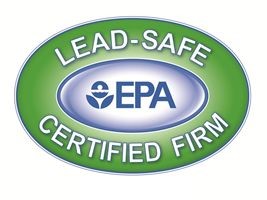Lead is a toxic metal that was widely used in paint products prior to 1978. More than two-thirds of the homes built before 1940 and over half of the homes built from 1940 to 1960 contain heavily-leaded paint.
It was commonly applied to both interior and exterior surfaces, such as woodwork, doors, and windows; until in 1978 the U.S. government banned the use of lead-based paint.
Lead paint is still present in millions of homes, sometimes under layers of newer paint. If the paint is in good shape, the lead paint is usually not a problem. If the lead-based paint is deteriorating (peeling, chipping, chalking, cracking, damaged, or damp) or it is disturbed during renovations, then yes, it is a hazard and needs immediate attention. Precautions must be taken so that you do not breathe in lead dust. Lead from paint, including lead-contaminated dust, is one of the most common causes of lead poisoning.
Renovations, such as installing replacement windows, require lead safe practices for installation.
As of April 22, 2010, federal law requires that contractors performing renovation, repair and painting projects that disturb more than six square feet of paint in homes, child care facilities, and schools built before 1978 must be certified and trained to follow specific work practices to prevent lead contamination.
Testing for Lead
First, we test for the presence of lead. There is a certified EPA lead-safe lead test kit that we use to take a sampling of the paint. If the test comes up positive for lead levels, then we incorporate lead-safe work practices into the job to prevent any airborne lead particles from getting into the air. Comfort Windows has been Lead-Safe Certified by the Environmental Protection Agency (EPA).

Lead Safe Work Practices
- If we find lead paint, we must isolate the area in order to work there. We post signage and cordon off the property as well as the area to be worked on. That’s because we will be working inside and outside during a window installation. Our team will be wearing lead-safe work practice certified suits.
- We seal off the window from the rest of the environment and isolate it, by either building a small plastic “zip wall” around it or actually putting plastic right over the inside of the window and taping it off to the walls. That way we do not have to seal off the entire room during the installation. The worksite is then assessed by our EPA certified renovators.
- Once the site has been assessed by the renovator and the renovation plan has been identified, we address the window or door itself. We take the old window out, removing one by one each piece/area of the window that contains lead.
- We have to spray each piece we remove with water, using a mister.
- After the pieces have been sprayed with water, we take a piece of plastic and wrap each one. Each piece of the window that may have lead paint on it has to be individually wrapped in plastic.
- At last, the new windows can be installed as we would normally install them, depending, of course, on the type of window and style you have chosen.
- The clean-up process is just as important because we still need to keep that lead dust contained. All the plastic has to be folded in, and each has to be misted again with water. Only then can the pieces be safely and properly removed from the property. Additionally, we use high-efficiency HEPA vacuums to ensure a proper cleanup of the location.


